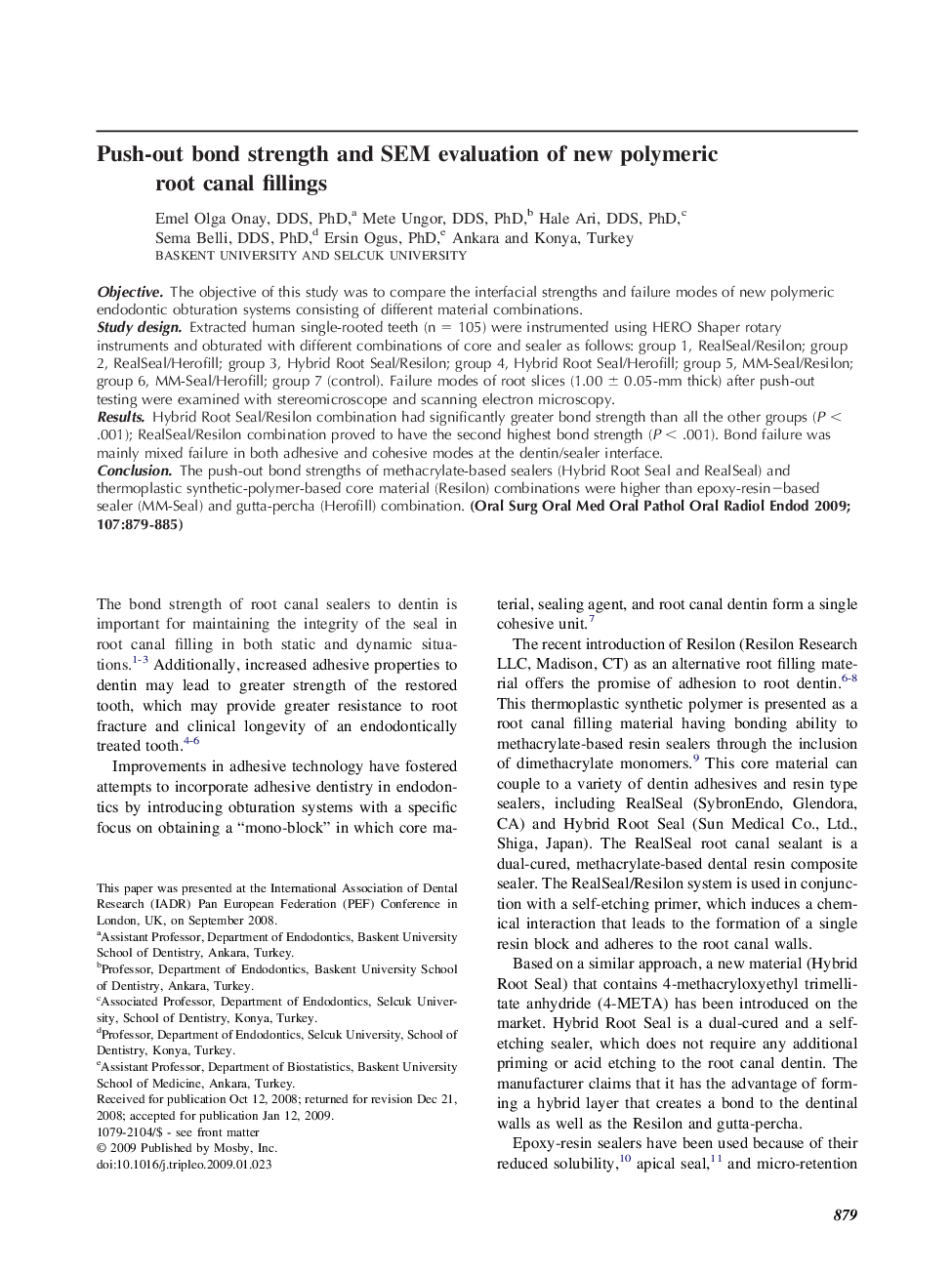| Article ID | Journal | Published Year | Pages | File Type |
|---|---|---|---|---|
| 3168047 | Oral Surgery, Oral Medicine, Oral Pathology, Oral Radiology, and Endodontology | 2009 | 7 Pages |
ObjectiveThe objective of this study was to compare the interfacial strengths and failure modes of new polymeric endodontic obturation systems consisting of different material combinations.Study designExtracted human single-rooted teeth (n = 105) were instrumented using HERO Shaper rotary instruments and obturated with different combinations of core and sealer as follows: group 1, RealSeal/Resilon; group 2, RealSeal/Herofill; group 3, Hybrid Root Seal/Resilon; group 4, Hybrid Root Seal/Herofill; group 5, MM-Seal/Resilon; group 6, MM-Seal/Herofill; group 7 (control). Failure modes of root slices (1.00 ± 0.05-mm thick) after push-out testing were examined with stereomicroscope and scanning electron microscopy.ResultsHybrid Root Seal/Resilon combination had significantly greater bond strength than all the other groups (P < .001); RealSeal/Resilon combination proved to have the second highest bond strength (P < .001). Bond failure was mainly mixed failure in both adhesive and cohesive modes at the dentin/sealer interface.ConclusionThe push-out bond strengths of methacrylate-based sealers (Hybrid Root Seal and RealSeal) and thermoplastic synthetic-polymer-based core material (Resilon) combinations were higher than epoxy-resin−based sealer (MM-Seal) and gutta-percha (Herofill) combination.
